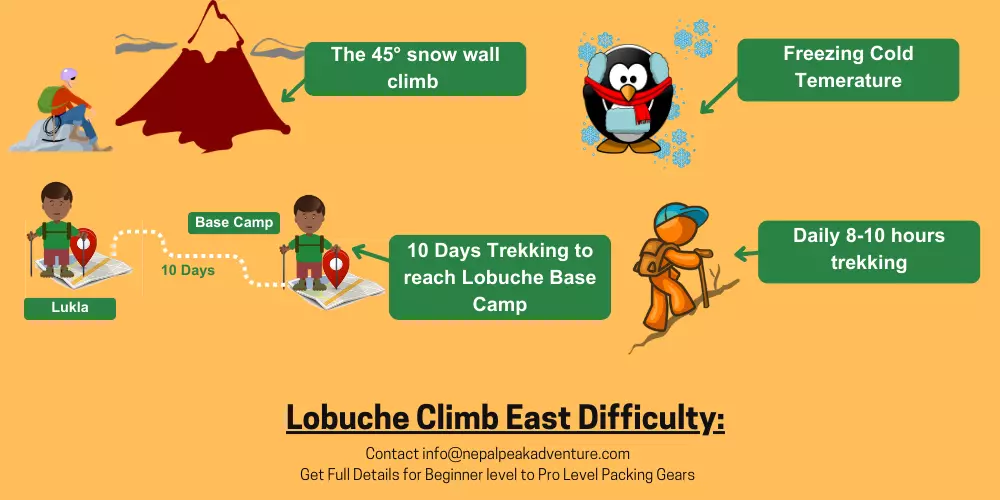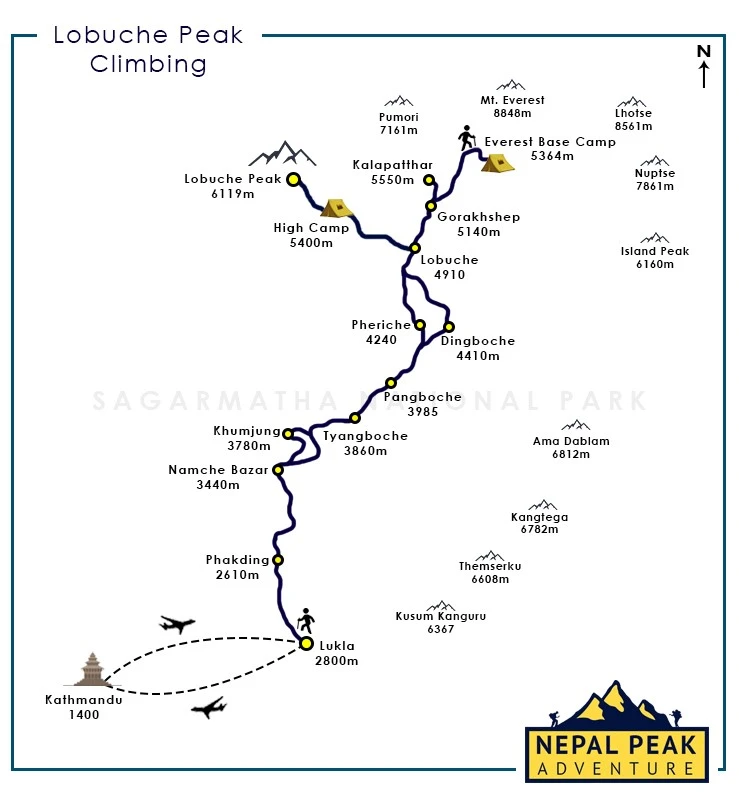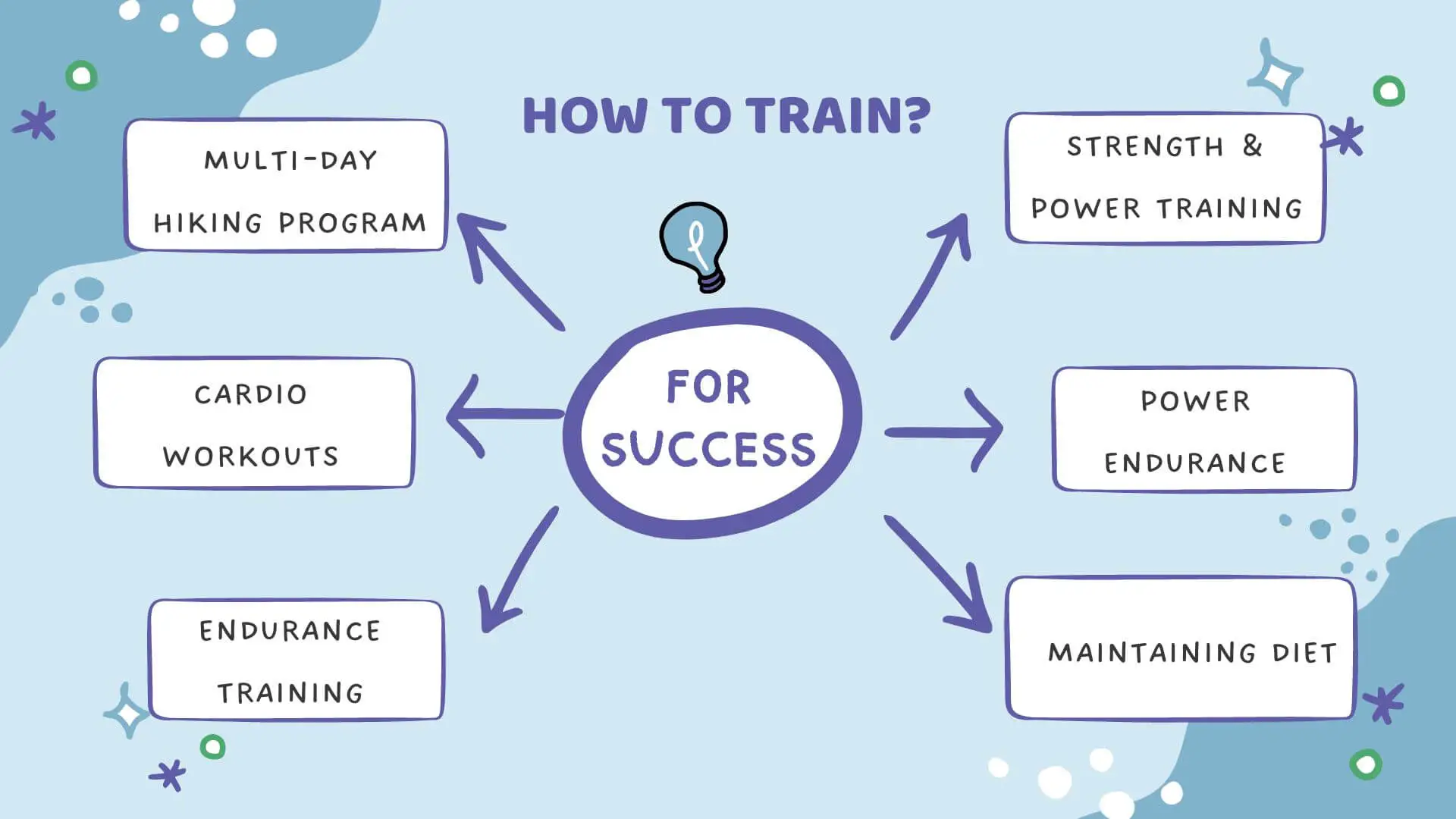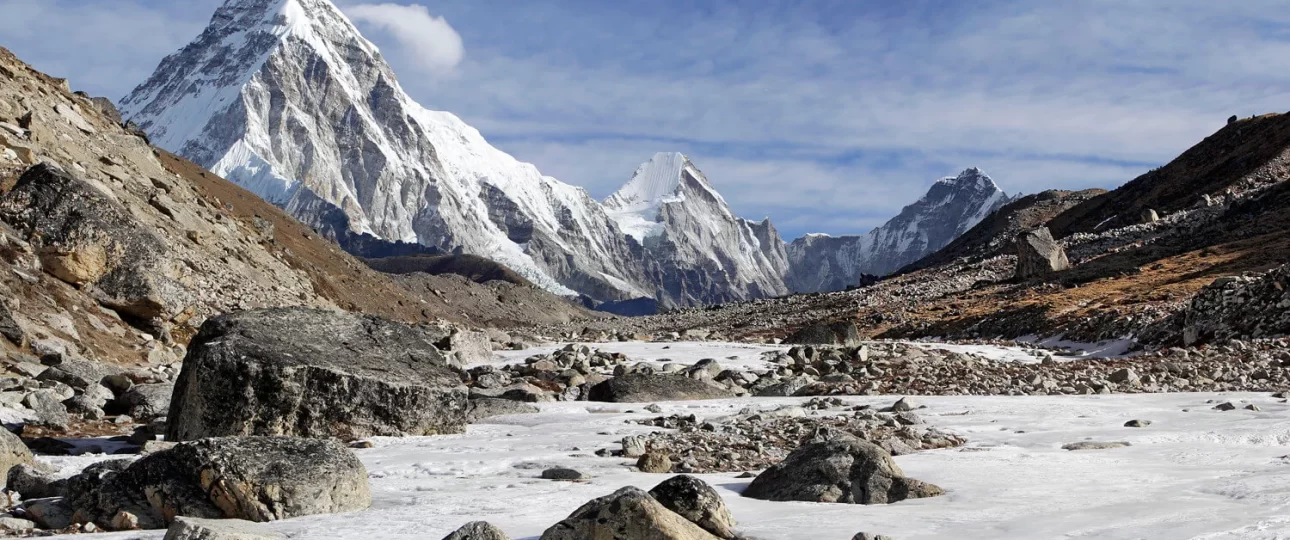Lobuche Peak Climbing Guide: Complete Guide to 18 Days
Lobuche Peak is one of the most popular 6,000m+ climbing peaks in Nepal. Tougher than the island peak of 6,189m due to more technical difficulties, Lobuche Peak can be what you were looking for to test your climbing skills.
With an outstanding view from the Lobuche Peak summit i.e., Mount Everest (8,849m), Lhotse (8,516m), Nuptse(7,869m), Pumori (7,161m), Ama Dablam (6,812m), Lobuche Peak is worth climbing once in a lifetime. And to help you, Nepal Peak Adventure brings you a “Lobuche Peak Climbing Guide”, everything you need to know before climbing.
Located in the Khumbu region of Nepal close to Khumbu Glacier above Lobuche village, Lobuche Peak climbing is done from the east side due to less technical difficulty than Lobuche west. Lobuche Peak from the East is also said a trekking peak because you trek through Everest Base Camp before climbing Lobuche Peak.
Technical Climbing, because it needs specialized climbing equipment to climb the icy terrain, deep notch ridge, and final steep headwall to arrive at the summit. Let’s explain some difficulties you may face when climbing Lobuche Peak
Lobuche Climb East Difficulty:

- Because Lobuche Peak is a trekking peak, you will be trekking from Lukla to Lobuche Base Camp for around 10 days which can be tiresome.
- Once you cross the Lobuche village, the path gets rougher & riskier i.e., rocky, snowy slopes, and steeper as you head towards the summit. The 45° snow wall climb will be challenging and needs specialized climbing equipment.
- You will be spending some nights in the camp tent in the freezing cold temperature with little sleep, little food, and sometimes bad weather.
- A total of 8-10 hours of effort to reach the Lobuche east summit on the summit day & return back to base camp.
Let’s not forget that this is trekking peak climbing which is why you will need to walk 5-6 hours every day during the trek. Proper acclimatization & guidance to prepare yourself for the summit day as well as keeping your health top-notch.
To be honest, there are also other factors that are the reason for Lobuche Peak Climbing Difficulty.
18 Days Outline Itinerary of Lobuche Peak Climbing with Map:

The itinerary includes the day-to-day destination name, time to reach, and the elevation of each destination.
- Day 01: Arrival in Kathmandu, Tribhuvan International Airport
- Day 02: Sightseeing in Kathmandu & Preparation for the trekking
- Day 03: 30 min Flight to Lukla (2,860m) & 3/4 hours of Phakding Trek (2,610m)
- Day 04: Trek to Namche Bazar 5/6 hours (3,440m)
- Day 05: Acclimatization Day at Namche Bazar
- Day 06: Namche Bazar to Tengboche 5/6-hour Trek (3,867m)
- Day 07: Trek to Dingboche (4,410m) 5/6 hour
- Day 08: Acclimatization Day at Dingboche
- Day 09: Dingboche to Lobuche 5/6 hour (4,940m)
- Day 10: Trek to Everest Base Camp (5364) via Gorakshep (5164m)
- Day 11: Hike to Kala Patthar (5644m) and trek back to Lobuche (4940m) – 6/7 hour
- Day 12: Trek to Lobuche High Camp (5400m) – 3/4 hour
- Day 13: Lobuche High Camp to Summit (6119m) and return to High Camp (5400m) 8/10 hour
- Day 14: Contingency day
- Day 15: Trek to Pangboche (3985m) – 7/8 hour
- Day 16: Trek to Namche Bazar (3440m) – 5/6 hour
- Day 17: Trek to Lukla (2860m) – 6/7 hour
- Day 18: Return flight to Kathmandu (1400m) 30 minutes flight
- Day 19: Final Departure
Lobuche Peak Climbing Preparation Guide

Whether you’re a beginner or an avid trekker, peak climbing means strength, endurance, mental fortitude, good balance, and techniques. Because when climbing, each and every part of your body muscle will be exhausted so a good workout plan is most crucial.
According to your initial fitness level, you should train a minimum of 3 months prior to your trip. Most of the details about preparation are included in this “Lobuche Peak Climbing Preparation Guide”.
Multi-Day Hiking Program:
The goal to achieve from hiking is to get familiar with the day-to-day trekking experience while carrying a backpack. If possible, hiking from lower to higher elevations can get you comfortable with intensity on future treks by adding some distance and load.
Begin with an easier hike & a light backpack at a lower elevation and slowly increase the elevation as well as weight. The more you hike the more you will be ready for the Lobuche Peak Climbing. However, allow your body to rest & fully recover a week or two before your climb date.
Climbing activity to train for Climbing:
Climbing is a good exercise for a full-body workout which helps with strength, stamina, balance, and flexibility. Thus, climbing is the best way to prepare for climbing. Similarly, for Lobuche Peak Climbing, you need to have good knowledge of both rock climbing & ice climbing.
Rock climbing mostly uses your muscle from hand to feet which can be a good workout plan for Lobuche Peak Climbing. Whereas, from ice climbing, you will get a better knowledge of using gears & tools as well as essential techniques required for peak climbing.
Getting to know about the uses of gears like ice axe, crampons, lightweight mountaineering Harnesses, carabiners & other essentials gears is the main theme of this program.
Cardio Workouts:
Cardio workouts are very essential to improve your overall fitness level, heart, and lungs as well as strength & endurance. It boosts your capacity to withstand the harsh environment while also strengthening your heart & blood vessels.
Cardiovascular training includes running, cycling swimming, rowing, power walking, boxing, and any other exercise that improves your breathing and heart capacity. A six-week of workout plan after developing a good base of fitness is what you will need.
A low-intensity endurance training on the first week, adapting the workout, improving on your weakness like grips/holds & angles. In the second week start on your strength & your muscle. Improving stamina and increasing the heart & respiratory rate for rock climbing.
The third week for power endurance increases the intensity of your workout. Aerobic & Anaerobic training is lower than endurance training with mid-high intensity.
The fourth week with strength & power training to keep you on track while Lobuche Peak climbing. Strength training to move with a certain amount of weight & power to keep going within a certain time.
The fifth week with complete endurance training following low-intensity endurance training and proper rest. Light activities such as jogging, swimming, and biking while recovering from the fourth-week training is a great starting point.
Sixth-week continuing power endurance training and taking proper rest. You can choose a more flexible & varied training program too.
Maintaining Diet:
No workout plan can be completed without a proper diet. You will not get the result you hope for by eating unhealthy foods while following the proper workout plan. The better your diet is, the better you will be in endurance, strength, concentration, flexibility & more.
As for the Lobuche Peak, climbers need to lean on proteins while maintaining a light body weight focusing on a healthy & strong body. Along with this, carbohydrates & calcium are also essentials that can be obtained from leafy vegetables.
Leafy vegetables are a good source of fiber, vitamins, and minerals and are low in calories. Keeping your digestive system healthy means absorbing all the nutrients well enough which is why a proper diet is most needed. Similarly, you need to make a habit of drinking a minimum of 2 liters of water every day.
In conclusion, preparing for Lobuche Peak is not as hard as you think. You need to follow a proper workout plan and focus on building endurance rather than muscles.
Lobuche Peak Climbing Cost:
Lobuche Peak climbing is an expensive sport due to the number of specialized gear that you need to buy. Similarly, Lobuche being a trekking peak, you will have to first trek to Lobuche Base Camp which can take a lot of days. Guides, porters, food, accommodations & many other expenses will be added to the package.
However, with only 19 days of Itinerary at just USD 2,575, Nepal Peak Adventure is providing Lobuche Peak Climbing including the following services:
- Airport pick-up and drop facility
- Welcome dinner with a live Nepali cultural program and a farewell dinner.
- 3-star standard accommodation in Kathmandu with breakfast
- Kathmandu- Lukla- Kathmandu flight, airport tax, and domestic transfer
- Teahouse/Mountain Lodge and tent accommodation during the trekking and climbing
- All meals during the trekking and climbing and three times tea/coffee
- Expenses of Climbing Crews:
- Guide: Government-certified experienced, fluent English speaker, first aid and eco-trained climbing guide.
- Assistant Guides: We provide an assistant guide as per the group size to support you wherever necessary
- Porters: We provide porters as per the necessity to carry your stuff.
- All Necessary Climbing Permit Charge
- All federal and local taxes as applicable
- Down Jacket and sleeping bag (upon request)
- A duffle Bag (for the expedition purpose only) and a T-shirt (as a souvenir)
- Trekking map and certificate of climbing completion
- Group medical Kit Box (Diamox and other first aid medicine carried by a guide)
- The arrangement of Emergency Helicopter evacuation service will be paid for by your travel insurance company
- Final departure transfer
- To break down more, here is the price overview of Lobuche Peak climbing.
On-Arrival Visa Fee at the Airport:
Like most countries, Nepal also provides an “on-arrival visa” to tourists which costs the following:
15 Days – 30 USD
30 Days – 50 USD
90 Days – 125 USD
Nepal immigration has also provided a step-by-step method about how to apply for an arrival visa.
Hotel Charge in Kathmandu:
Kathmandu is the capital city of Nepal where you will stay for a night until your trek starts. The hotels of Kathmandu charge $15 to $20 for a basic room.
Trekking Permit & Climbing Permits:
You will need both trekking permits and climbing permits for Lobuche Peak Climbing. As for the trekking permits, you will need
- Khumbu Municipality Entrance Fee: 20 USD
- Sagarmatha National Park Permit: 30 USD
For the peak climbing, you will need to pay a fee to NMA (Nepal Mountaineering Association) which costs $250 in Spring. For the Autumn season, you will have to pay $125 and $70 for other remaining seasons.
Transportation Costs:
The starting point for Lobuche Peak climbing is Lukla which can be reached either by a vehicle following the classical route from Jiri or by taking a flight.
The cost for the Lukla flight is $195 for one way & $390 for a two-way flight. However, for Indian nationals, the flight cost is NPR 15,000 for one way and NRS 30,000 for a two-way flight.
As for the vehicle price, it will cost you around NRS 2500-3000 which is up to Salleri only. Again, from Salleri, it will take NRS 2500-3000 to reach the Khari Khola.
Guide & Porters:
It is almost impossible to go solo in Lobuche Peak Climbing. Guide & Porter is very essential for Lobuche Peak climbing as they will carry most of your loads from you. The cost for hiring a porter is $15 to $20 according to the season. Whereas, taking a guide with you will cost you around $25 per day. Both price is included in the package.
Gears lists and prices:
Finally, the most expensive part of peak climbing is also the most important one. Gears that you will need for Lobuche Peak Climbing and their price range.
| Gears | Price |
| Mountaineering 65L backpack from Black diamond, Osprey, Hyperlite, orthodox | $200-$350 |
| Ascender | 30$-$80 |
| Climbing Harness (all-rounder) | $60-$100 |
| Crampons | $10-$20 |
Carabiner
| $5-$10 |
| Ice axe | $90-$150 |
| Trekking Pole | $20-$90 |
| Snow bar | $20-$40 |
| Infinity Day rope (Dry Treated between 8.0mm-9.8mm thick) | $225-$350 |
| Ice Screw | $60-$80 |
| Descender– | $30-$70 |
| Helmet | $60-$150 |
| Tape slings | $50-$60 |
| Climbing Boots | $200-$600 |
| Gaiters | $10-$40 |
| Climbing Gloves | $60-$150
|
| Glaciers Glasses (5-7% VLT Range) | $80-$200
|
The above gears are for peak climbing while excluding the packing list for the Everest Base Camp trek. The things you need to pack for Everest Base Camp Trek are:
- a) Duffel Bag
- b) Lower Body
| 2 pair of Socks, | 2 Pair of trekking socks, | 2 Pair of Climbing Socks
|
Full Boot for Trekking (Ankle protection & Water Proof)
| Gaiters
| Down Booties
|
Thermal Bottoms (2 pairs)
| 4 Pairs of Synthetic Underwear
| 2 Pairs of trekking pants
|
Insulated Pants
| Shell pants
|
- Head:
Winter Cap/Hat
| Beanie
| Buff
|
Polarized Sunglass
|
- Upper Body
Long Sleeve Thermal Base Top (2 Pair)
| Insulate or Down jacket (2 Pair)
| Waterproof Jacket
|
Fleece Gloves
| Sleeping Bag
|
- First Aid Kit & Toiletries
Should include=Diamox, Aspirin, Pulse Oximeters, Antibiotics, Lung inhaler(optional), Water purifier, Hand Sanitizer, Deodorant, Wet wipes, Soap, Body lotion, Nostril openers, bandages
- Other Accessories:
| Water Bottle | Portable Charger | Headlight |
| Raincoat | Raincoat |
Best Weather to Climb for Lobuche Peak Climbing
The month of March to May (spring season) and September to November (Autumn season) is the perfect time for Lobuche peak Climbing where climbing conditions are muchly favorable at that time.
Still, between the Spring season and the Autumn season, climbers tend to climb in the Autumn season more than the Spring season because the Spring season has more fresh snow than the autumn season. Breaking the trail during the Spring season is a lot harder than during the Autumn season. However, the sherpa will take care of the trail.
During the time of Spring season, you may face unpredictable weather rarely which is why you should be prepared for any delay on your itinerary. Having said that, at the time of clear weather during the spring season can be the best time to climb Lobuche Peak. The number of trekking & peak climbing during the spring season is also less which makes it the perfect season to climb without any hassle. This is also the reason that you need to pay an NMA fee of $250 to climb Lobuche Peak.
More details on “Best Time for Lobuche Peak Climbing“
On the other hand, the Autumn season has always been a peak season with a great success rate in both trekking & peak climbing. The weather is always good with a clear blue sky and warm temperature most of the time. Best photography & view is expected during the Autumn season. Climbing Lobuche Peak is also a little easy during the autumn season with a high number of climbers. During the Autumn season, you need to pay $125 to NMA.
Besides Spring & Autumn seasons, climbing the Lobuche Peak during Monsoon & Winter seasons is not impossible but has a low rate of success. However, people climb during pre-monsoon & Late winter which is also called shoulder time. During the shoulder time, it is possible to get the best experience in Spring & Autumn seasons. Similarly, the fee for an NMA permit is only $70 during Monsoon & Winter seasons.
In conclusion, the best weather for Lobuche Peak Climbing is Spring if you want a challenge & best view. Autumn season, if you are looking for a high-rate chance and the best weather. Pre-Monsoon & Late Winter if you want the best value & once in a lifetime view.
While there is a tip for Everest Base Camp trekking, there are also some tips for climbing. From gears to preparation guides, lots of climbers from us have given the same tips. So, here are the top best tips that you didn’t know about:
- Buying the right gears:Buying new gear may sound better because you won’t have to buy it for your next climb. However, buying everything is also not the best option when you can rent some gear in Nepal. Carrying everything in luggage is also a hassle and consumes more space when coming to Nepal. So, the best option is to rent the heavier things that can be rented.Also, when buying the gear choose what you feel comfortable with and go for a quality check. As for the trekking gear, you can rent sleeping bags & down jacket for your trek.
- Find a partner (optional):Having a partner can help you in many ways like motivating each other, control over expenses, helping each other, and making the trip more fun. Yes, even if you come alone, you can take a guide and porter with you. However, the experience with your own partner/friend & with a guide is different.
- Get insurance:Traveling is fun but it also invites possible dangers or losses no matter where you go. The only thing that can help you with your loss while traveling is your insurance. And when it is climbing in Lobuche Peak, you definitely need travel insurance that can cover at least $10,000 & helicopter evacuation.However, you can’t get travel insurance for peak climbing in Nepal. You will need to get it from an international company like Worldnomads. Most of our clients have been recommended by World Nomads.
- Give way to Porter & Yak Caravan:While trekking, you may encounter people carrying heavy loads at higher altitudes or a Yak caravan coming. During that time, you should always give them a way to pass. Most importantly, lean on the side of the wall to prevent any accidents.
- Listen to your Guide:The guide is an important figure during trekking & climbing. They have a role to show you the path, clear the path and give information regarding both climbing & trekking. You should always listen to their briefing and important notes.
Some other useful tips for peak climbing are:
- Be careful when taking pictures at the edges of hills.
- Walk slowly at the trail to avoid AMS
- Carry Nepal currency
- Do not eat meat during the trek
- Do not consume any hard drinks during the trek



